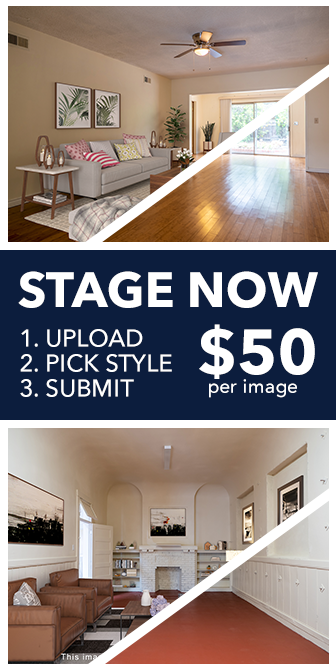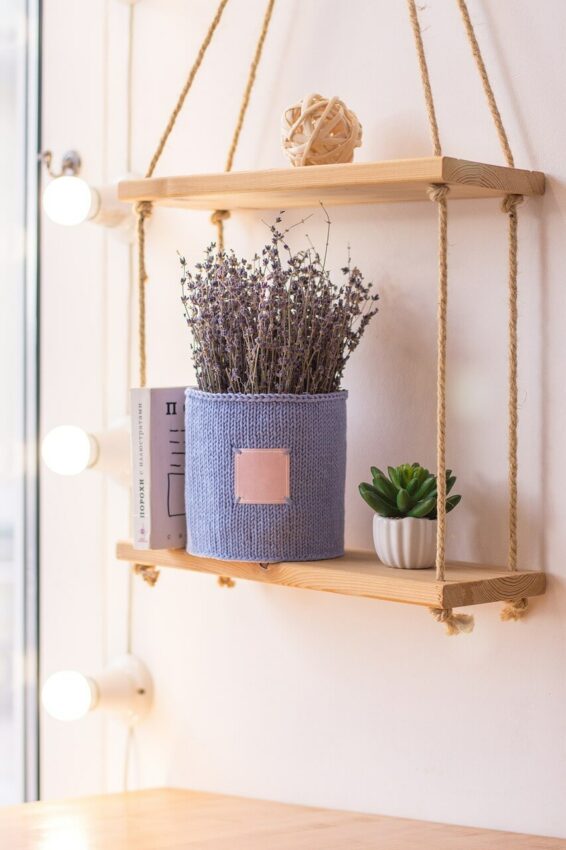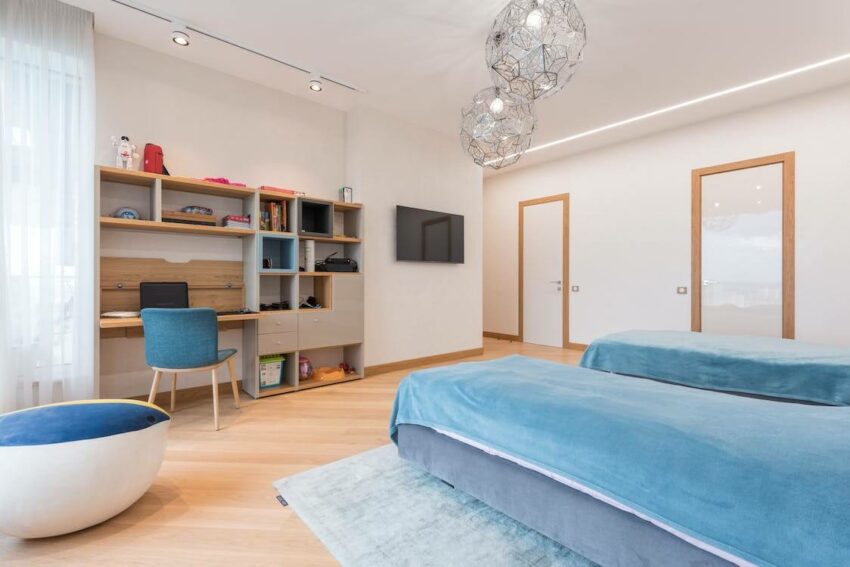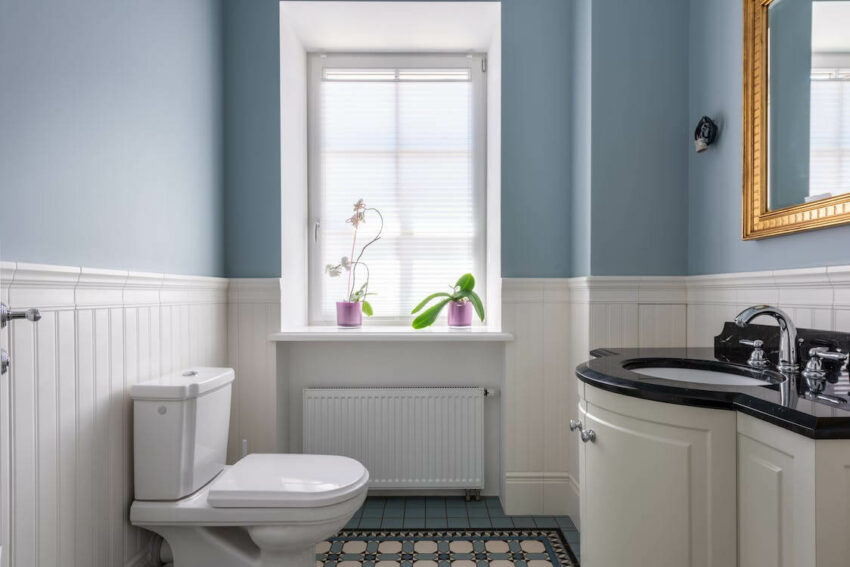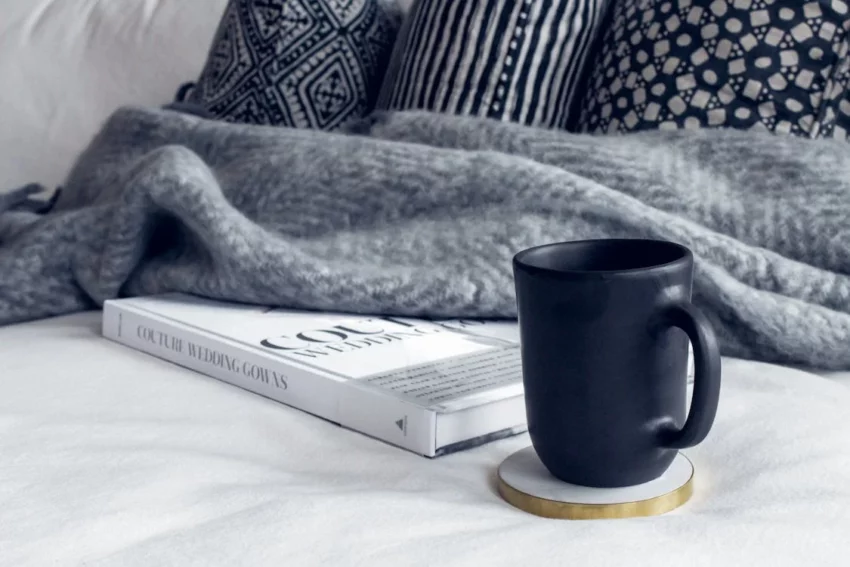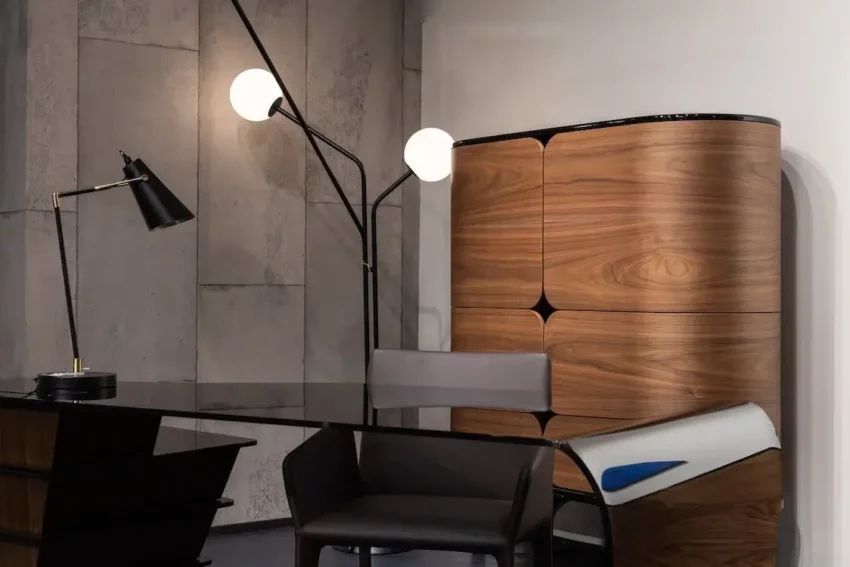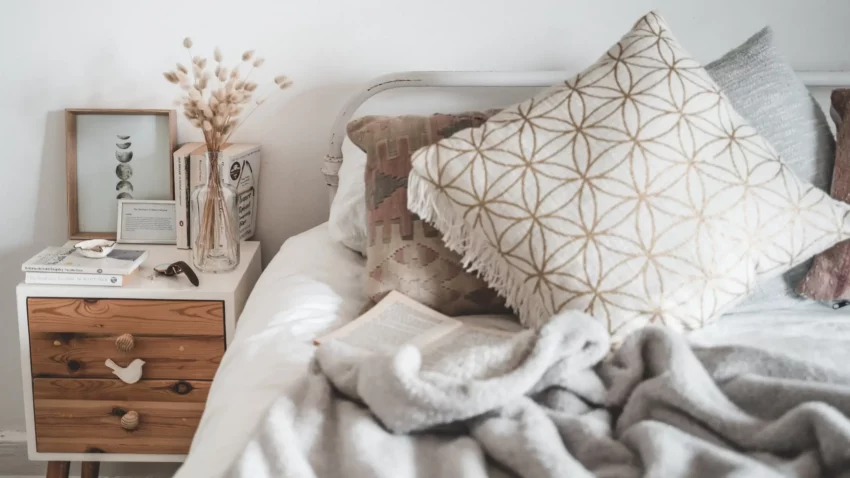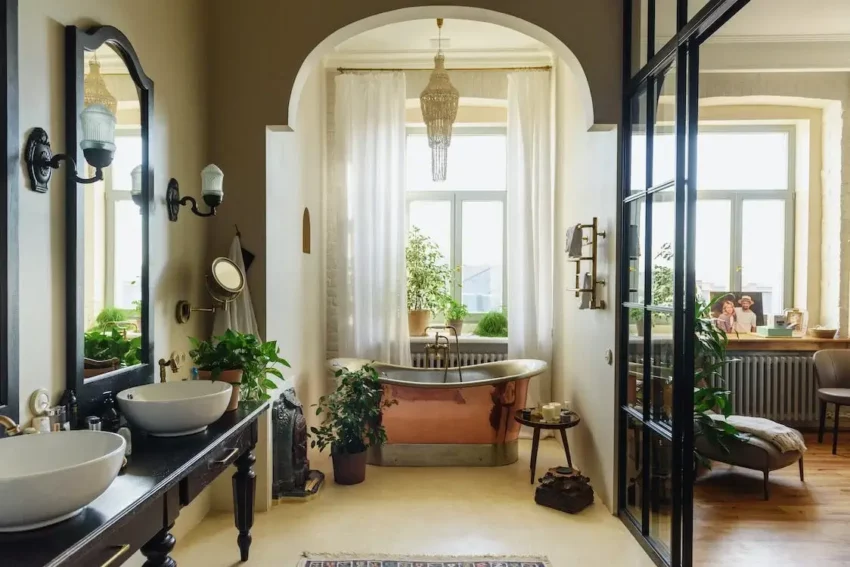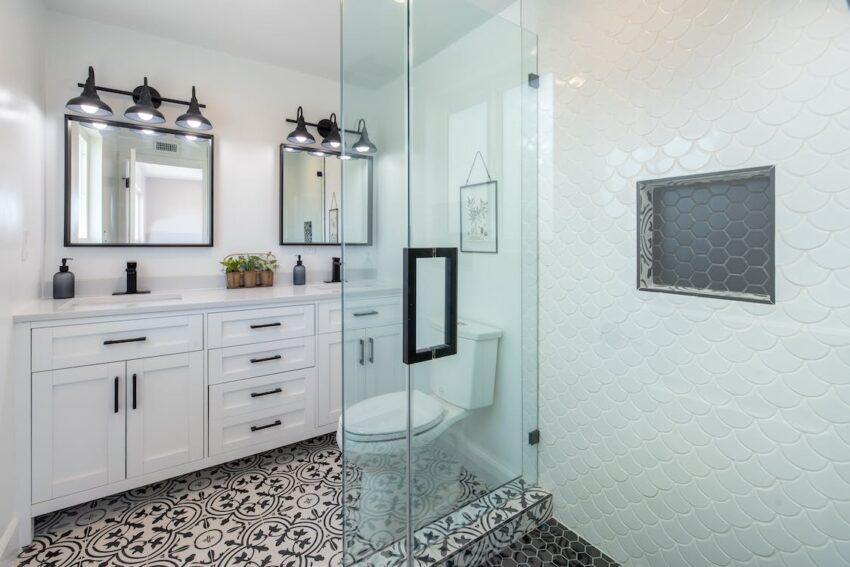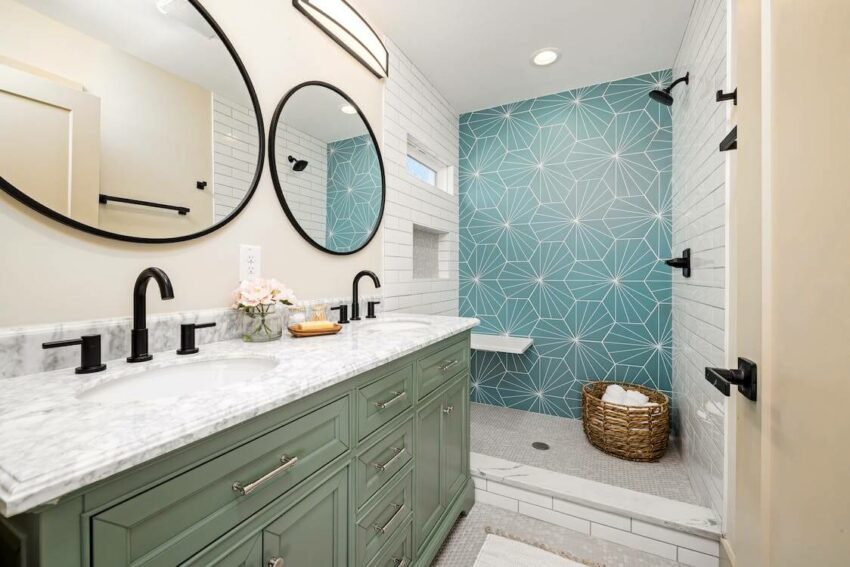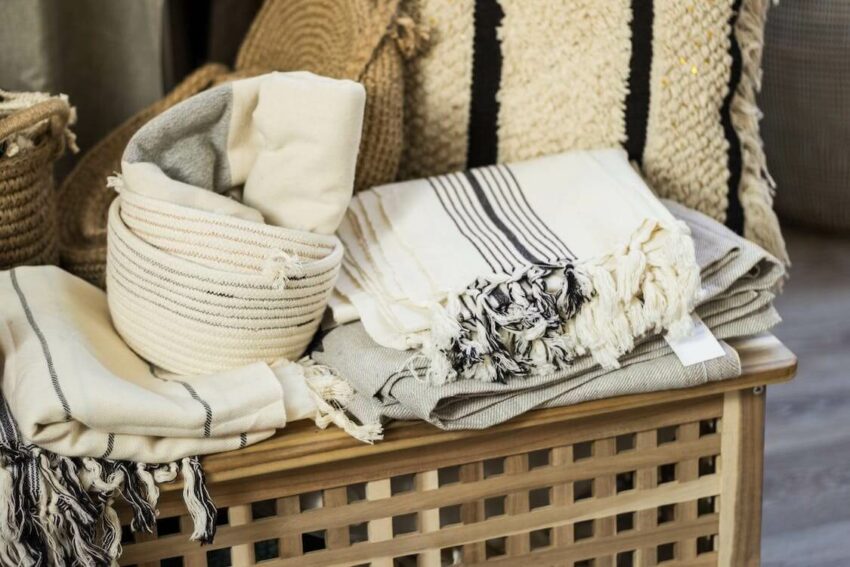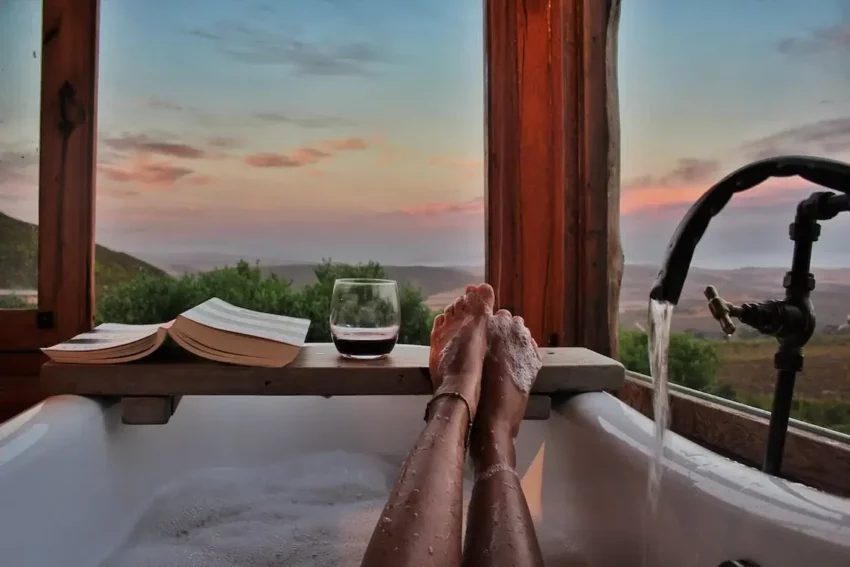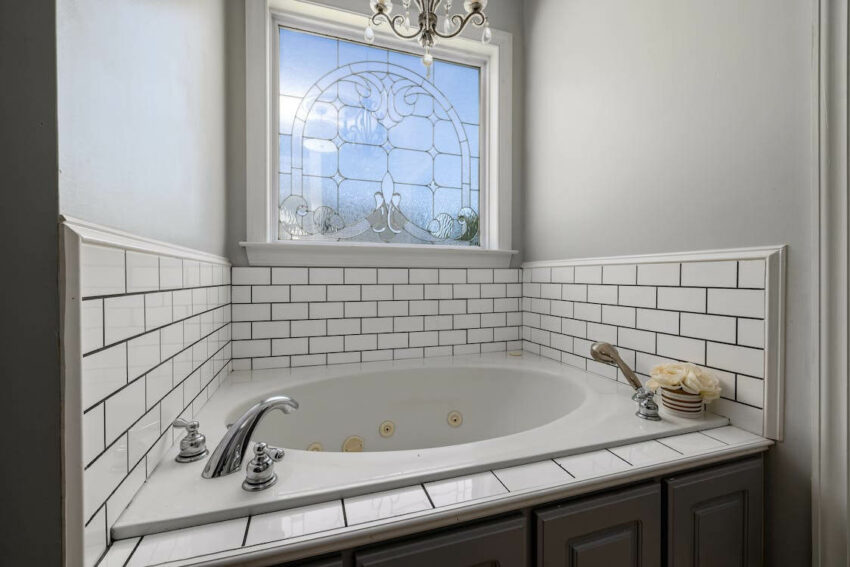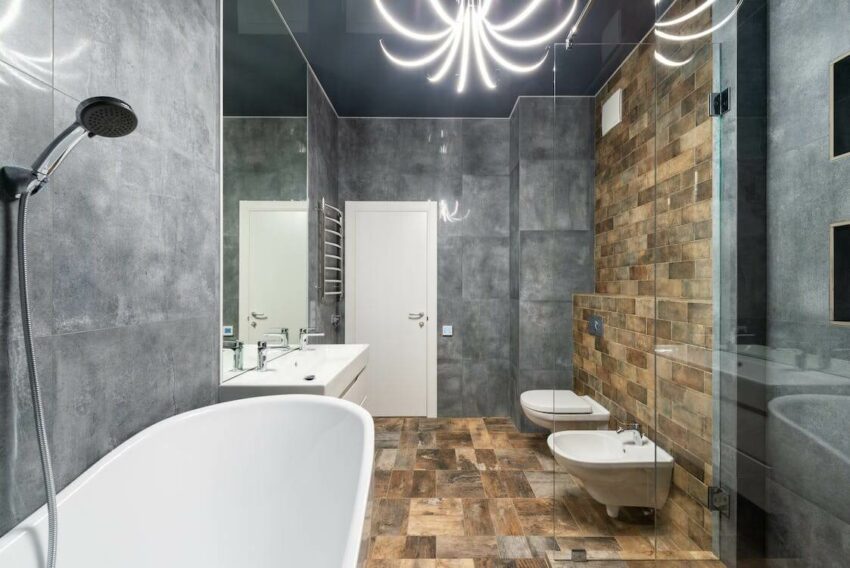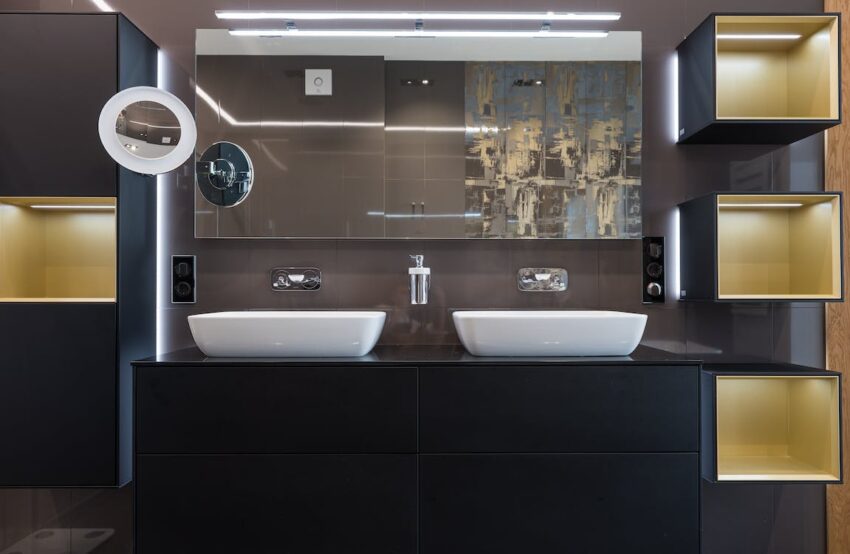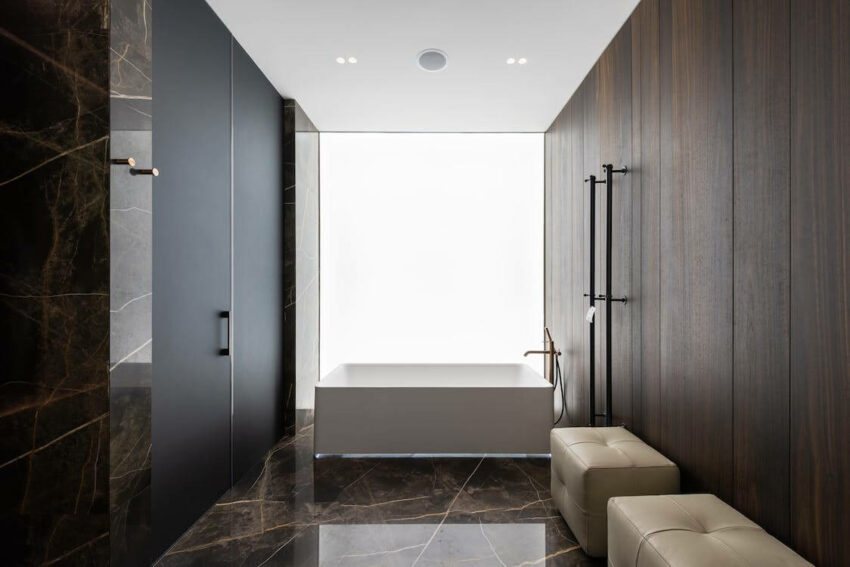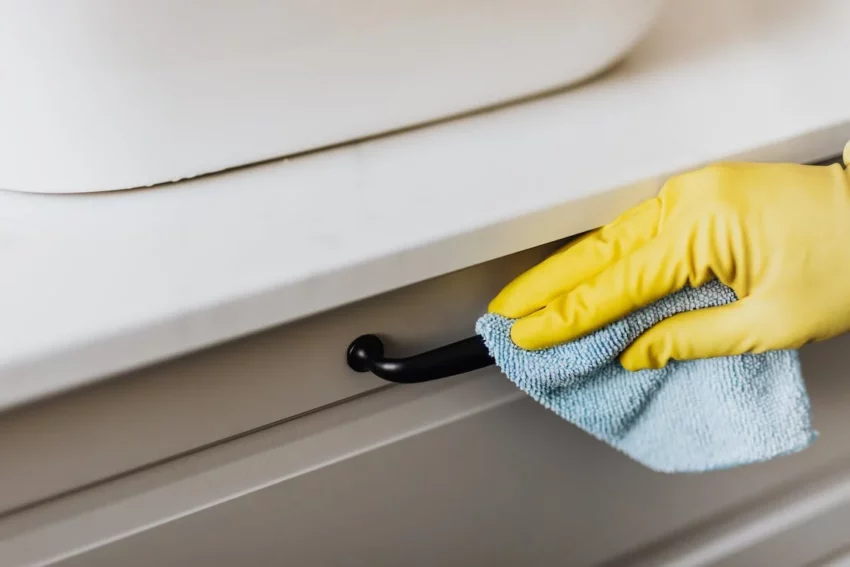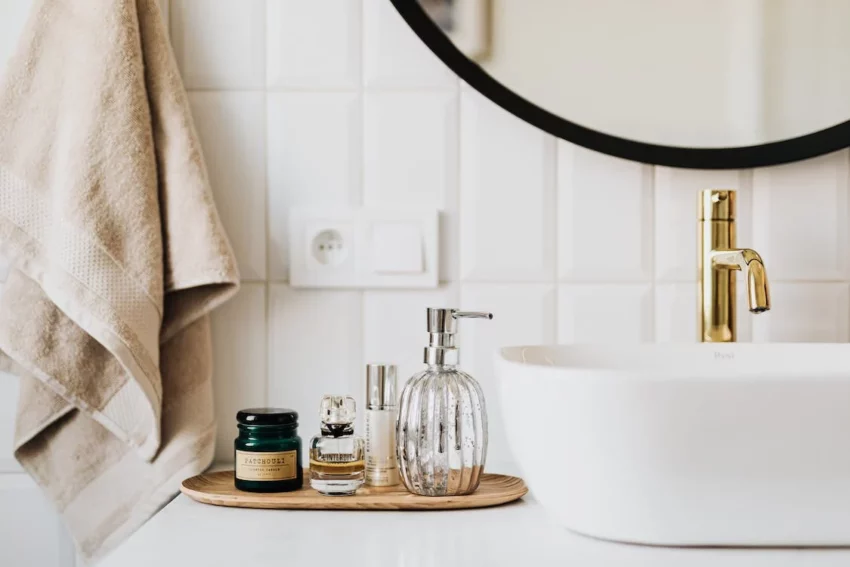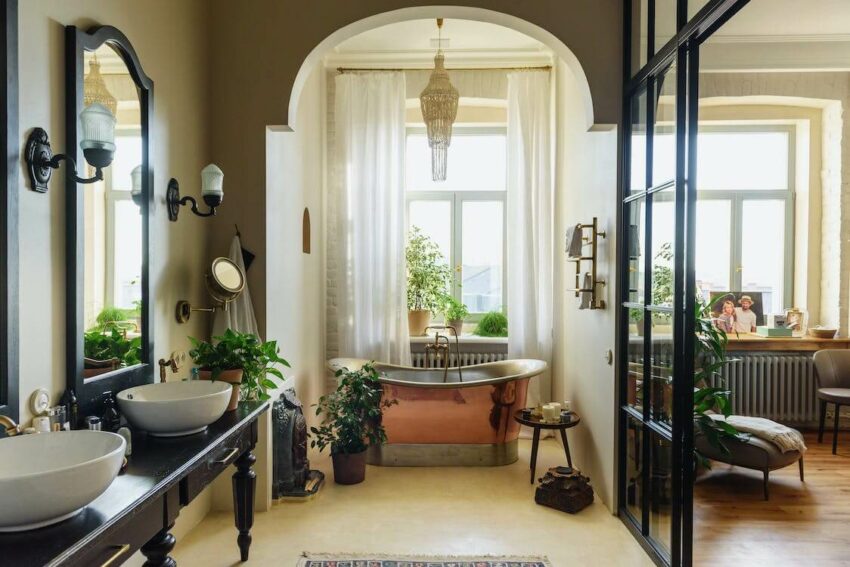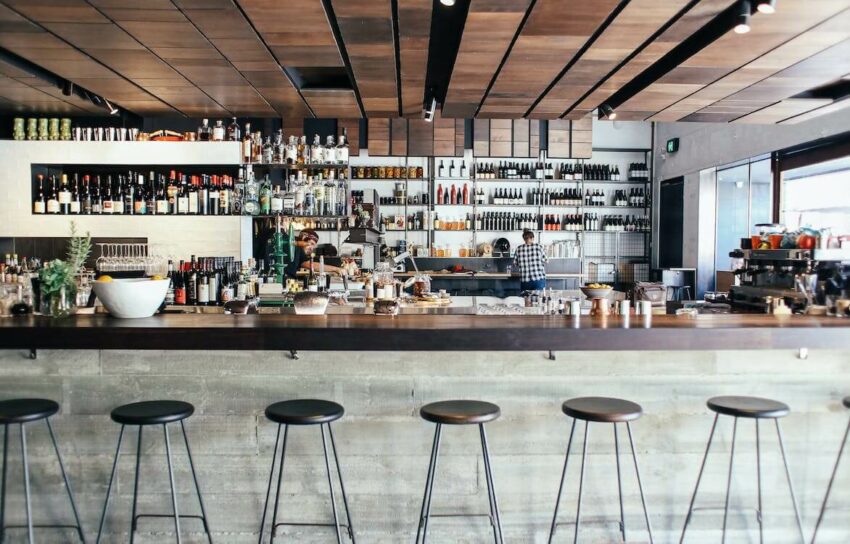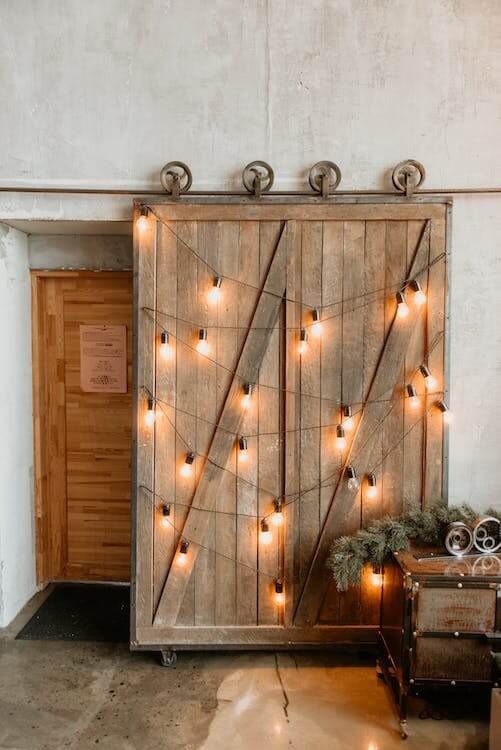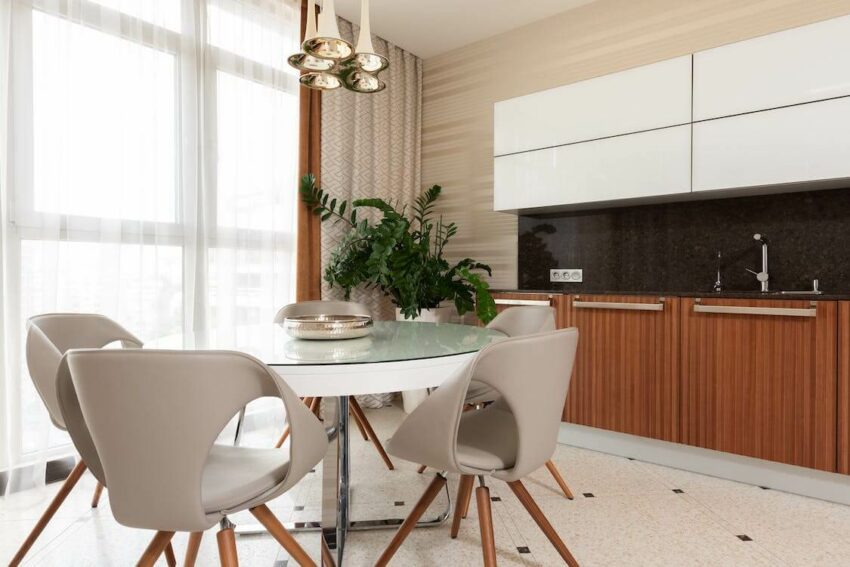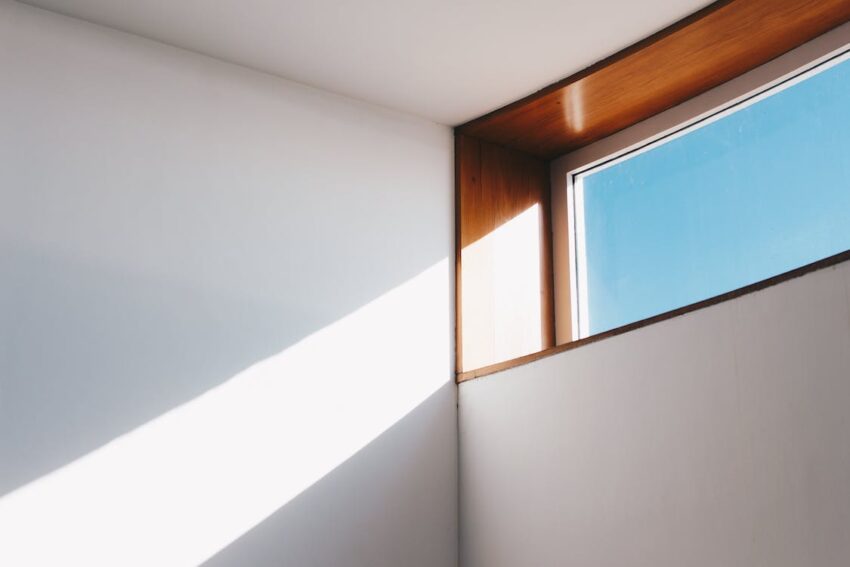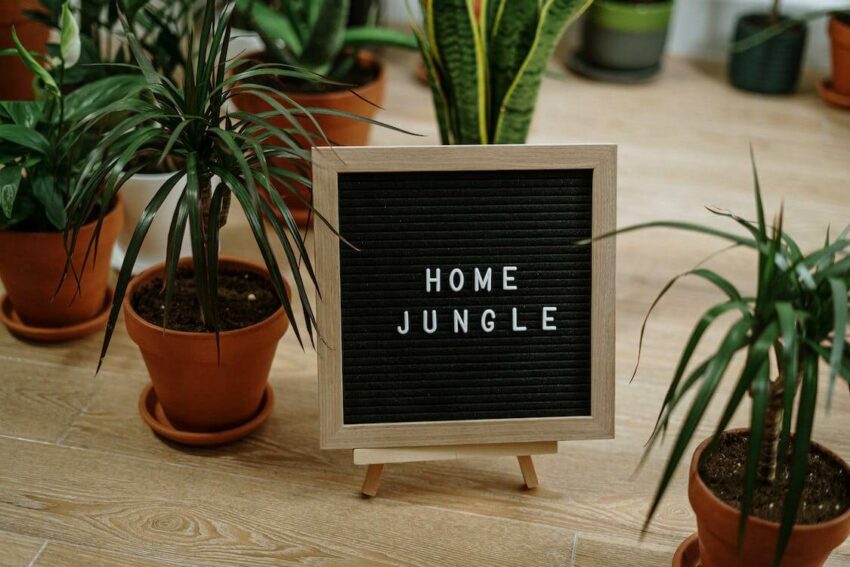“In the world of interior design, every detail holds the potential to elevate a space from ordinary to extraordinary. Among these details, the bathroom backsplash stands as an essential canvas for artistic expression, seamlessly blending style and functionality to create a statement piece that enhances the overall aesthetics of the room. In this comprehensive guide, we delve deep into the intricacies of designing with bathroom backsplashes – from material choices and layout considerations to installation techniques and trends that are shaping the modern design landscape. Whether you’re embarking on a bathroom renovation or seeking to infuse fresh life into your existing space, join us as we explore the art of transforming the bathroom backsplash into a work of art that marries form and function with finesse.”
The bathroom, a space of tranquility and self-care, offers a canvas for creative expression in every design detail. Among these details, the bathroom backsplash stands as an opportunity to infuse personality, style, and practicality into the room. In this comprehensive guide, we embark on a journey through the world of bathroom backsplashes – exploring their importance, material options, design considerations, installation techniques, and trends that are shaping the way we reimagine this essential element. Whether you’re starting a new bathroom project or seeking to update your existing space, read on to discover everything you need to know about designing with bathroom backsplashes.

The Importance of Bathroom Backsplashes
A bathroom backsplash serves as both a functional barrier and a visual anchor. It protects walls from water splashes, steam, and spills while offering an opportunity to introduce design elements that enhance the room’s aesthetics. The right backsplash not only complements the overall theme of the bathroom but also contributes to its durability and cleanliness.
Choosing the Right Bathroom Backsplash Materials:
Bathroom backsplashes are available in a wide array of materials, each with its own set of advantages and considerations. From classic ceramic tiles and sleek glass to natural stone and trendy mosaic patterns, the choice of material can significantly impact the look and feel of the space. Consider factors such as maintenance, water resistance, and how well the material aligns with your design vision.
Bathroom Backsplash Design Considerations:
- Color Palette and Theme: The backsplash can either blend seamlessly with the existing color palette or serve as a bold focal point. Consider whether you want it to complement the overall theme or introduce a contrasting pop of color.
- Pattern and Texture: Experiment with different patterns and textures to add visual interest to the space. Geometric patterns, subway tiles, herringbone layouts, and textured tiles can all create captivating effects.
- Scale and Proportion: The size of the tiles or the pattern you choose should harmonize with the dimensions of the bathroom. Larger tiles can make a small bathroom feel more open, while smaller tiles offer intricate detailing in a larger space.

Bathroom Backsplash Installation Techniques:
Proper installation is essential for both the visual appeal and longevity of the bathroom backsplash. Whether you’re opting for DIY or hiring a professional, ensure that the tiles are laid evenly, grout lines are consistent, and edges are finished neatly. Using the right adhesive and grout is crucial for maintaining the integrity of the installation over time.
Trends Shaping the Bathroom Backsplash:
- Bold Patterns and Colors: Modern bathrooms are embracing bold and vibrant patterns and colors in their backsplash choices, creating dynamic and energetic spaces.
- Textured and 3D Tiles: Three-dimensional tiles and textured surfaces are adding depth and tactile interest to bathroom backsplashes, transforming them into stunning focal points.
- Mixed Material Mosaics: The fusion of different materials like glass, metal, and stone in mosaic patterns is giving rise to unique and eclectic backsplash designs.
- Natural Stone Elegance: Marble, travertine, and other natural stone options are redefining luxury in bathrooms, creating elegant and timeless backdrops.
Bathroom Backsplash Maintenance and Care:
The longevity of your bathroom backsplash depends on proper care. Choose a material that aligns with your maintenance preferences and keep it clean by using non-abrasive cleaners and tools. Regular cleaning prevents the buildup of soap scum and mineral deposits, ensuring that your backsplash retains its original beauty.
Bathroom Backsplash and Interior Design: Crafting Elegance and Cohesion
In the realm of interior design, every element contributes to the symphony of a well-curated space. The bathroom, often a sanctuary of solace and rejuvenation, offers a unique canvas to weave together elements of aesthetics and functionality. Among these elements, the bathroom backsplash emerges as a key player, capable of transforming the room’s visual narrative while seamlessly integrating with the broader design scheme. This article delves into the exquisite interplay between bathroom backsplashes and interior design, exploring how this often-overlooked detail can elevate the ambiance, tell a design story, and create a cohesive environment that resonates with both style and practicality.

Tracing the Evolution: A Glimpse into the History of the Bathroom Backsplash
As we immerse ourselves in the rich tapestry of interior design, it’s fascinating to uncover the history and evolution of various design elements that have shaped our living spaces. The bathroom backsplash, a functional and aesthetic detail often taken for granted, has a history that stretches back through centuries of design innovation and cultural shifts. From its humble beginnings as a utilitarian necessity to its current status as a canvas for creative expression, the journey of the bathroom backsplash is a testament to the dynamic nature of design and the fusion of form and function.
Origins in Practicality:
The concept of the bathroom backsplash can be traced back to ancient civilizations that recognized the need to protect walls from water damage. In both public bathhouses and private residences, the backsplash served as a barrier against splashes and steam, preventing moisture-related issues. Initially, these were simple and functional installations made from materials like stone, clay, or even mosaic tiles – designed primarily to serve a purpose rather than make a statement.
The Victorian Elegance:
As design sensibilities evolved, the Victorian era witnessed the emergence of ornate and intricate bathroom designs. Bathrooms were transformed from mere utilitarian spaces into luxurious retreats. It was during this period that backsplashes began to incorporate decorative tiles with delicate patterns and motifs. These tiles, often hand-painted or handcrafted, added a touch of elegance and sophistication to the room, reflecting the opulence of the era.
Mid-Century Modern Simplicity:
With the mid-20th century came a shift towards clean lines and simplicity in design. The bathroom backsplash, influenced by the principles of mid-century modernism, favored minimalist aesthetics. Subdued colors and uncomplicated geometric patterns characterized this era, allowing the backsplash to blend seamlessly into the overall design without overpowering the space.
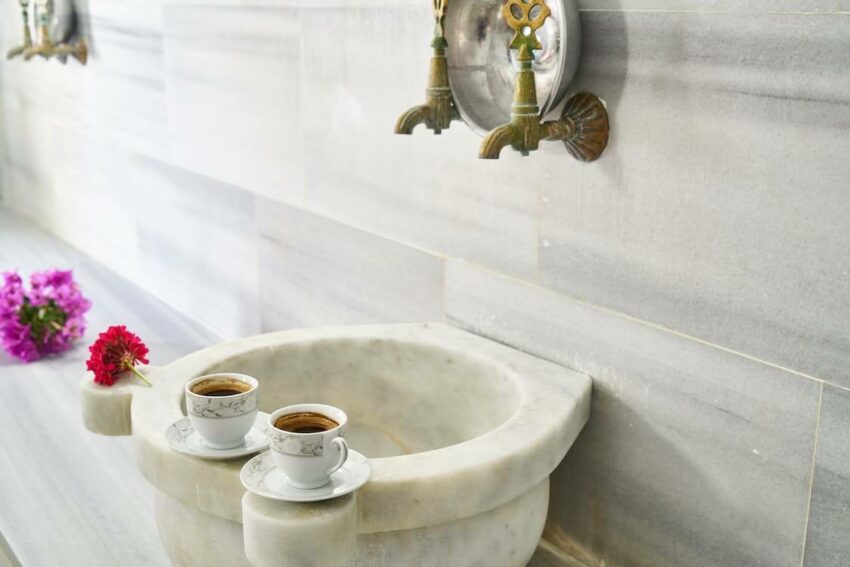
Contemporary Creativity:
In recent decades, interior design has embraced a spectrum of styles, allowing homeowners to express their individuality. The bathroom backsplash, once relegated to purely functional status, has emerged as a platform for creative expression. From sleek glass tiles to mosaic masterpieces, the modern bathroom backsplash embodies a diverse range of materials, patterns, and colors that reflect the homeowner’s personality and design preferences.
A Fusion of Form and Function:
Today, the bathroom backsplash embodies a perfect balance between form and function. It not only safeguards walls from water damage but also acts as a statement piece that ties together the design narrative of the room. With an array of materials, colors, and patterns to choose from, homeowners and designers alike have the creative freedom to craft a backsplash that harmonizes with the overall aesthetic, enhancing the room’s visual appeal and practicality.
A Continuum of Design Evolution
The history of the bathroom backsplash reflects the ever-changing landscape of design trends, cultural influences, and technological advancements. From its utilitarian origins to its current status as a design focal point, the backsplash has journeyed through time, adapting and evolving to cater to the changing needs and tastes of each era. As we continue to shape our living spaces, the bathroom backsplash serves as a reminder of the enduring marriage between functionality and aesthetics – a legacy that enriches our design heritage.
The Bathroom Backsplash in Different Styles of Interior: A Fusion of Form and Style
The bathroom, a canvas for creativity and self-care, lends itself to a myriad of design styles that reflect individual preferences and aesthetics. The bathroom backsplash, often an overlooked detail, is a versatile element that adapts seamlessly to various interior styles, adding a touch of elegance and cohesion to the space. Let’s explore how the bathroom backsplash complements different interior design styles, enhancing the overall ambiance and creating a harmonious visual narrative.

Minimalist Serenity
In a minimalist bathroom, the backsplash becomes a refined element that embraces simplicity. Clean lines, subdued color palettes, and uncluttered spaces call for backsplashes that are equally understated. Subtle subway tiles or monochromatic mosaic patterns contribute to the serene atmosphere, allowing the focus to remain on the purity of the design.
Vintage Charm
For bathrooms infused with vintage charm, the backsplash becomes an opportunity to evoke nostalgia. Handcrafted tiles with intricate patterns or designs reminiscent of a bygone era can transport the space to a time of elegance and sophistication. Soft pastels or warm earth tones add to the vintage allure, creating a seamless fusion of the old and the new.
Modern Industrial Edge
In industrial-inspired bathrooms, the backsplash serves as a bold juxtaposition against raw materials like exposed brick and metal fixtures. Concrete-inspired tiles or metallic finishes contribute to the edgy aesthetic, creating an environment that’s both urban and avant-garde.
Coastal Tranquility
In beach-inspired bathrooms, the backsplash takes on the hues of the sea and sky. Soft blues, gentle whites, and natural textures resonate with the coastal theme. Subtle aquatic motifs or sea glass-inspired tiles infuse the space with a sense of tranquility and relaxation.
Luxurious Elegance
Elegance is the hallmark of luxurious bathrooms, and the backsplash becomes a canvas for opulence. Marble tiles with intricate veining or mirrored surfaces create an aura of grandeur. Metallic accents and rich jewel tones elevate the space, embodying a sense of lavishness.
Eclectic Fusion
In eclectic bathrooms, where various styles harmoniously coexist, the backsplash becomes an outlet for creative expression. Mixing and matching different tiles, patterns, and colors add vibrancy to the space. Whether it’s a combination of bold patterns or a blend of contrasting materials, the backsplash reflects the homeowner’s personality and design flair.

Rustic Retreat
Rustic bathrooms embrace natural elements, and the backsplash embodies this ethos. Weathered wood tiles, stone surfaces, or mosaic patterns reminiscent of nature create an authentic rustic atmosphere. Earthy tones and textures bring the outdoors inside, adding warmth and charm.
Contemporary Chic
Contemporary bathrooms thrive on sleek lines and modern aesthetics. The backsplash follows suit with clean, geometric designs or monochromatic tiles that seamlessly integrate with the overall design. The emphasis is on minimalism and functionality, resulting in a cohesive and stylish space.
A Universal Design Element
From minimalist serenity to opulent luxury, the bathroom backsplash is a universal design element that adapts to various interior styles, contributing to the overall ambiance and aesthetic appeal. By choosing materials, colors, and patterns that align with the chosen style, homeowners and designers can create bathrooms that are not only functional but also reflective of their design vision, resulting in spaces that exude charm, sophistication, and individuality.

Conclusion: Elevating Design with Bathroom Backsplashes
In the realm of bathroom design, every detail contributes to the overall ambiance and functionality of the space. The bathroom backsplash, with its dual role as a protective barrier and a design element, offers an opportunity to weave style and practicality into a harmonious ensemble. By considering material options, design considerations, installation techniques, and current trends, you’ll be well-equipped to transform your bathroom into a personalized haven that’s not only visually stunning but also reflective of your unique taste and lifestyle. Whether you opt for timeless elegance, contemporary innovation, or a blend of both, the bathroom backsplash stands ready to elevate your design vision to new heights.
Looking for more great style and design tips for your bathroom?
- Bathroom Counter Decor Style Guide
- The Best Tips to Organize Your Bathroom Drawers
- Our Favorite Bathroom Flooring Ideas
- The Elegance of Bathroom Vanities
- Styles of Bathroom Backsplashes
- Trends in Bathroom Ceiling Paint
- Stylish Bathroom Chandeliers
- Our Guide to Bathroom Windows
- Interior Decorators Guide to Bathroom Towels
- Our Favorite Bathroom Tiles
- Designers Bathroom Mirror Tips
- Interior Design and Style Bathroom Ideas





